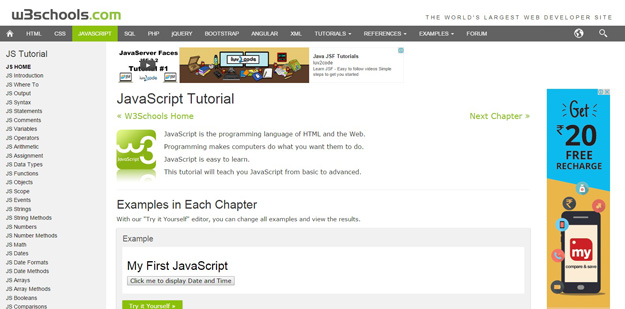

We are the largest web developer learning site in the world. W3Schools Certificates are trusted by the top companies and institutions worldwide. The certificate will be in your name and can be shared on your resume and social media to help document and show off your knowledge as a developer.Įmployers and friends can check if the certificate is authentic using the link or QR code for the certificate. In all our courses you also get the appropriate certificate exam and certificate for free with your course purchase.Ī W3Schools certificate is a display of knowledge you get from passing a certificate exam. In courses you also get a personal progress overview that tracks your progress and makes sure you resume where you last left off. If you already have a lot of experience within JavaScript development, and only want to take the certification exam, you should buy the certificate exam instead of course.Ĭourses are a structured collection of text-based modules and interactive exercises.

The say_Name() method displays the value of this.name, which resolves to you are a beginner and want to learn, you should buy the course. This example creates an object called the person that has three properties which are: name, age, and job, and one method ( say_Name()). The simplest way to create a custom object is to create a new instance of the object and add properties and methods to it, as in the example mentioned below: var person = new Object() In this chapter, you will learn about JavaScript Object-oriented concepts. The best source for web documentation is Mozilla Dev Network. Whether this is what W3Schools tried to do, I don't know, but I don't like it. Lots of shitty, shady sites use 'W3' in their name to try to make you think they're more official than they are. For this reason, it thinks of ECMA-Script objects as hash tables, i.e., nothing more than a combination of name-value pairs where the value may be data or a function. Also, W3Schools has zero connection to the W3C, which the name is clearly meant to imply. Each property and method is recognized by a name mapped to a value. ECMA-262 describes and classifies an object as an "unordered collection of dissimilar properties, each of them having a primitive value, object, or function." Firmly speaking, this means that an object is an array of all values in no specific order.


 0 kommentar(er)
0 kommentar(er)
